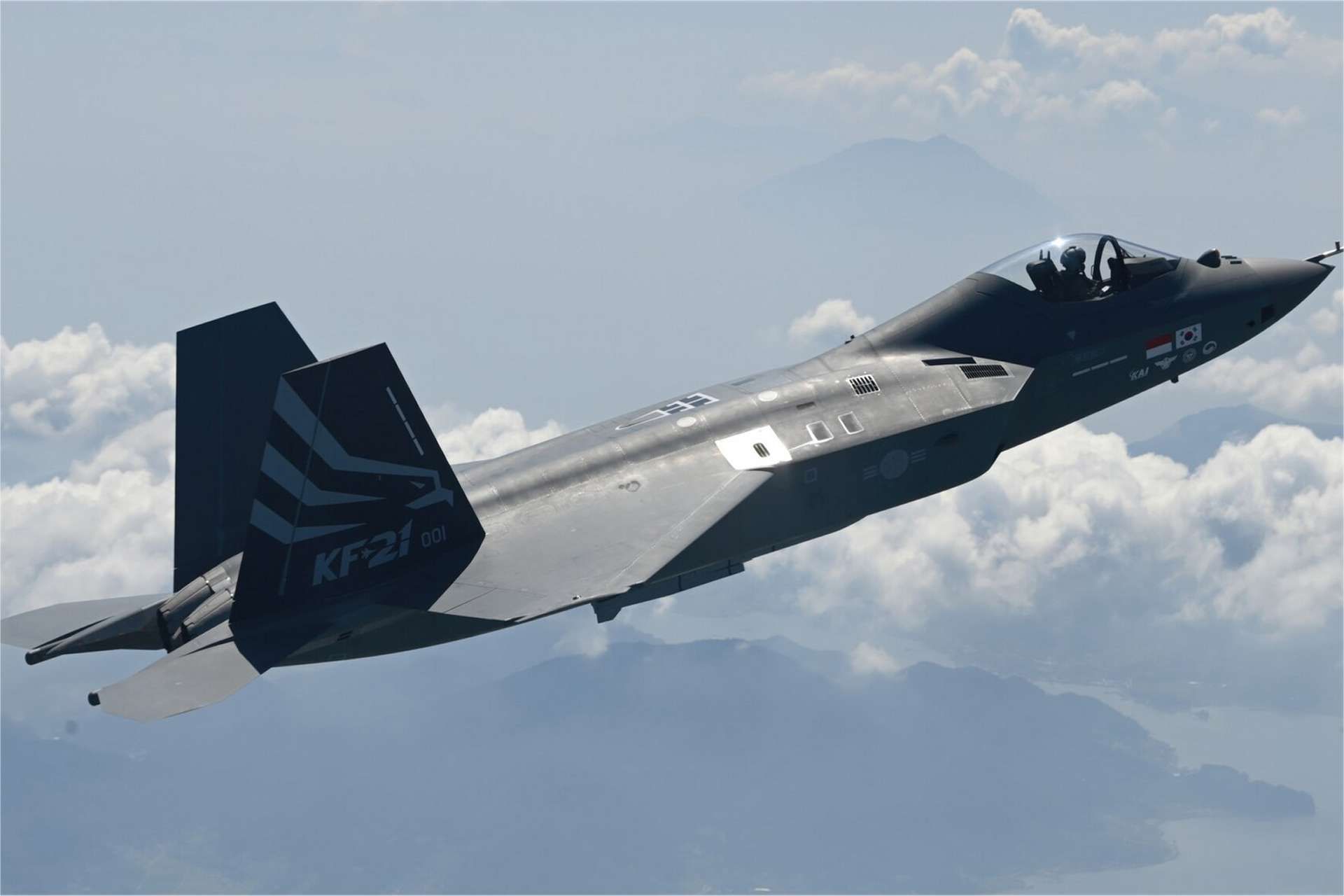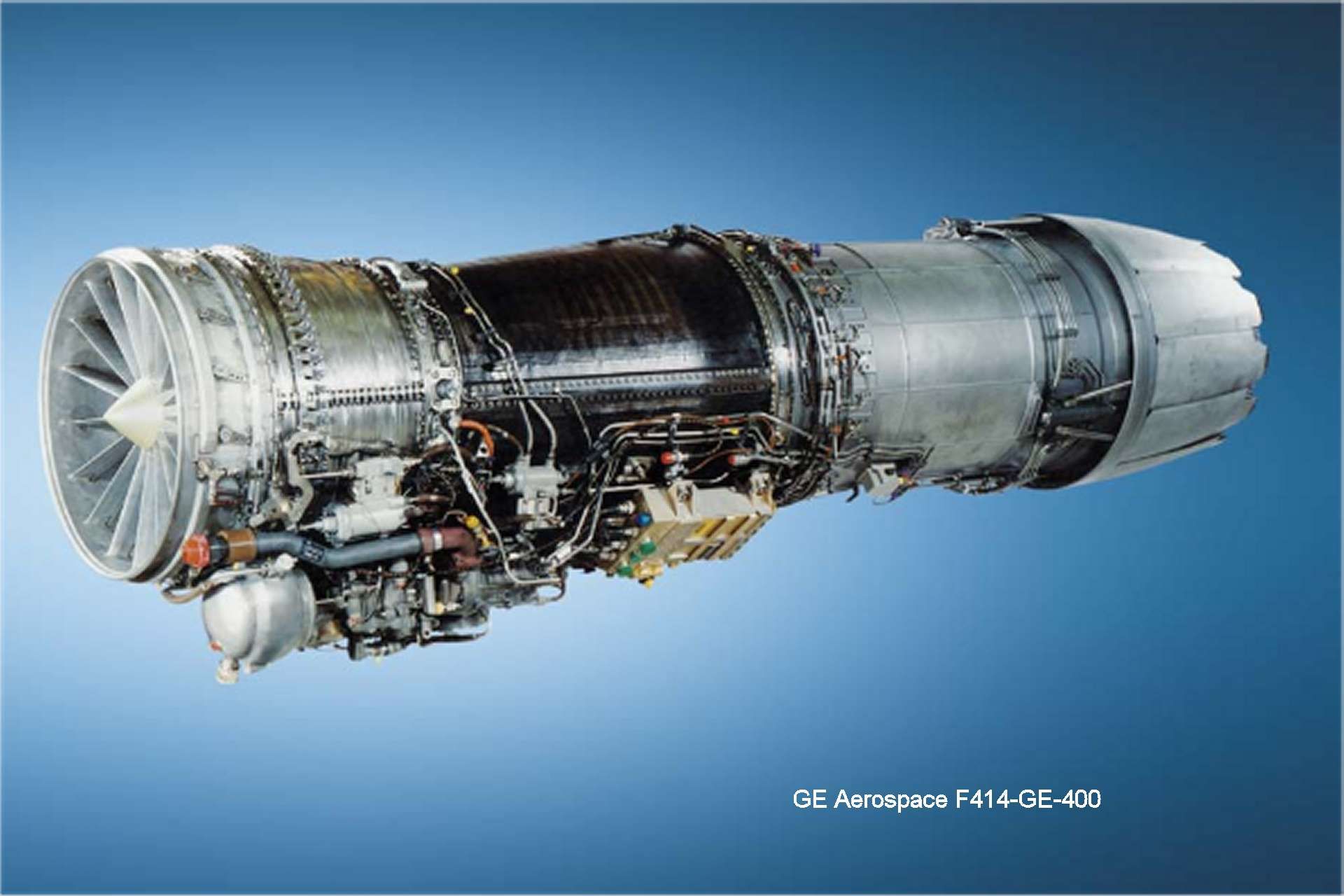Breaking News
Hanwha Aerospace Secures $401M Contract for KF-21 Fighter Jet Engines.
On June 25, 2024, Hanwha Aerospace, a leader in South Korea's defense industry, announced that it had secured a crucial contract with the Defense Acquisition Program Administration (DAPA) to supply engines for the new KF-21 Boramae multirole combat aircraft of the Republic of Korea.
Follow Army Recognition on Google News at this link

Hanwha Aerospace South Korea KF-21 Fighter Jet (Picture source: Wikimedia)
This contract, valued at approximately 401 million US dollars, will take effect from June 2024 to December 2027. During this period, Hanwha Aerospace is committed to delivering more than 40 F414 engines, as well as the necessary spare modules for the KF-21 aircraft. The contract also includes the provision of engine maintenance manuals and onsite technical support.
A spokesperson for Hanwha Aerospace emphasized the company's commitment to quality and reliability: "As the only company specialized in aircraft engines in Korea, we are committed to providing high-quality engines without delay. We will dedicate all our resources to developing independent aviation engine technology for national defense and securing future growth opportunities for Korea."
The company had previously signed an agreement with GE Aerospace in July 2016 for the local assembly and manufacture of parts for the F414-GE-400 engine, which was chosen to power the KF-21 as part of the KF-X development program led by Korea Aerospace Industries (KAI). This agreement also aims to support flight testing and the development of maintenance infrastructure for possible licensed production.
"Local production of the KF-X engines will stabilize local production systems and the supply of frequently replaced parts, thereby reducing operating costs and improving combat readiness for the Republic of Korea Air Force [RoKAF]," added the spokesperson.
The F414 engines for the KF-21 will be produced under license at Hanwha Aerospace's Changwon Plant 1. The company also stated that it has produced more than 10,000 engines over the past 45 years, supplying engines for RoKAF aircraft such as the F-4 Phantom, KF-5 Jegong-ho, KF-16 Fighting Falcon, F-15K Slam Eagle, and T-50 Golden Eagle.
Looking to the future, Hanwha Aerospace plans to develop a fully indigenous 6th generation engine with a thrust of 15,000 lb (66.8 kN), which will power the Block III production examples of the KF-21 in the second half of the 2030s, marking a significant step towards autonomy in combat aircraft engine technology.
The F414-GE-400 engine, developed by GE Aerospace, represents the cutting edge in combat aircraft propulsion technology. This gas turbine engine offers exceptional performance, with a maximum thrust of over 22,000 pounds, making it ideal for modern combat aircraft that require high maneuverability and supersonic capabilities. The F414-GE-400 is known for its reliability and fuel efficiency, which helps to reduce operating costs while increasing the range and power of the aircraft it equips. With a modular design, this engine facilitates maintenance and reduces the time needed for repairs, which is essential for keeping aircraft combat-ready.
The collaboration between Hanwha Aerospace and GE Aerospace on the F414-GE-400 engine is a striking example of strategic partnership in the aerospace and defense industry, where companies from different countries combine their expertise and resources to leverage their respective technologies and access new markets.
Under this licensing agreement, Hanwha Aerospace is authorized to produce the F414-GE-400 engines in South Korea using GE's technology and designs. This encompasses not only the assembly of the engines but also the manufacture of some essential parts, as well as the provision of the necessary maintenance and technical support. This partnership allows Hanwha to leverage GE's advanced expertise to enhance its own production and maintenance capabilities.
One of the most important aspects of this collaboration is the technology transfer from GE to Hanwha, which includes training, technical assistance, and access to proprietary technologies. This transfer is crucial for enabling Hanwha to comply with international standards of quality and performance established by GE.
Moreover, GE Aerospace assists Hanwha in developing the necessary infrastructure for flight testing and maintenance, ensuring that the engines produced under license meet the rigorous requirements demanded by modern combat aircraft. This collaboration is also beneficial for the development of the South Korean industrial ecosystem, thus boosting the local economy and strengthening national defense autonomy.
The prospects of this cooperation include not only current production but also the potential for future projects, including engine upgrades, new versions, or other aeronautical developments. Hanwha also plans to participate in the development of technologies for 6th generation engines, positioning the company at the forefront of aerospace innovation.
This strategic alliance offers considerable benefits on both sides. For GE Aerospace, it means facilitated access to the South Korean market and a competent production partner in Asia. For Hanwha Aerospace, it represents an opportunity to expand its technological and production expertise, while consolidating its position as a major player in the defense and aerospace industry. Thus, the collaboration between Hanwha and GE perfectly illustrates how international partnerships can share risks, costs, and skills in carrying out complex and costly projects such as the manufacture of aircraft engines.
The GE Aviation F414-GE-400 engine is an advanced turbofan distinguished by its integration into several cutting-edge combat aircraft, including the Boeing F/A-18E/F Super Hornet, the EA-18G Growler, the Saab Gripen Next Generation, and the Tejas LCA. Designed to deliver exceptional power, this engine belongs to the thrust class of 22,000 lb, or 98 kN in the international system, making it ideal for enhancing the speed and maneuverability of the aircraft it equips.
The F414-GE-400, measuring 154 inches long (391 cm), is optimized for compact integration into fuselages, thereby enhancing aerodynamics and overall aircraft performance. With an air flow rate of 170 lb/sec (77.1 kg/sec), it is capable of handling large volumes of air, essential for efficient combustion and thrust generation. The engine features a maximum diameter of 35 inches (89 cm) and an inlet diameter of 31 inches (79 cm), facilitating robust and efficient air intake. Its high compression ratio of 30:1 is crucial for increasing combustion efficiency, while the thrust-to-weight ratio of 9:1 demonstrates an excellent balance between power and weight, thus increasing the aircraft's agility.
Incorporating the Full Authority Digital Electronic Control (FADEC) system, the F414 optimizes management of all flight phases, thereby enhancing operational performance and fuel consumption, while maximizing safety. Advanced materials and cooling techniques used in its design improve resistance to high temperatures and extend the lifespan of components. This is essential for prolonged operations and contributes to reducing maintenance costs.
The enhanced version of the engine, the F414 Enhanced Engine, may incorporate additional technical advancements that increase component capability and reduce ownership costs, or offer up to 20% additional thrust with improved specific fuel consumption.

GE Aerospace F414-GE-400 engine (Picture source: GE Aerospace)


























